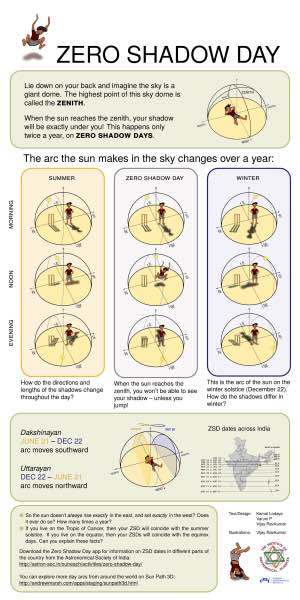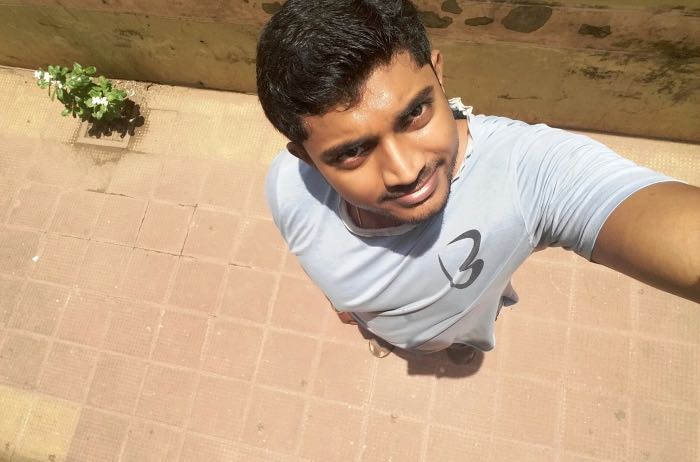From childhood to adulthood to old age, shadows never stop intriguing people their entire life. Who would not have chased it tirelessly as a child hoping to catch or outrace their own shadow! The awareness of its science later opened a whole gamut of learning. Forget the scare of the lurking shadows and the countless mysterious nightmares around them that never failed to give us goosebumps. Zero Shadow is one of those phenomena that continue to amaze human beings. Some of them look forward to watching the ‘Zero Shadow Day’ – a celestial event – occurring twice a year even though momentarily.
From Pune to Bhubaneswar to Kolkata, the zero shadow day enthusiasts – amateurs to experts – have witnessed the event over the last month. Some of them have been earnestly sharing their experience on various social media platforms. In Kolkata, the first Zero Shadow Day of the year was witnessed yesterday (5 June) at around 11.35 am, while in Gujarat’s Jamnagar it was observed at 12:49 pm on 4 June 2021. The residents of Pune watched it at 12.31 pm on 13 May, while the people of Bhubaneswar viewed the rare event at 11:43 am on 21 May.
What is Zero Shadow Day?
Simply speaking, zero shadow means no shadow. But this is not about the pitch-black night situation. This is about the brightest time of the day. Though we know from the study of science and our experience that light makes shadow happen. And this is what makes zero shadow so interesting.
Zero shadow takes place when the Sun is exactly above you. When the Sun reaches the Zenith – highest point – an object makes its shadow right under it. This phenomenon can be observed in the areas that fall between +23.5 degrees and -23.5 degrees, which are also called the Tropic of Cancer (+23.5 degrees latitude) and the Tropic of Capricorn respectively.
Remember, this phenomenon is entirely different from what is popularly believed that the Sun is exactly above us at noon and we cast no shadow at that moment. In reality, even at noon, the Sun is not right over our heads – it’s slightly north or south – and so we still form tiny shadows under us. How? Let’s understand it better.
Why Zero Shadow occurs only twice a year?
According to the Astronomical Society of India, it is a well-known scientific fact that the rotation axis of the Earth is inclined at 23.5 degrees to the path of its revolution around the Sun. The arc of its movement is Southward (Dakshinayan) from June 21 to December 22 and Northward (Uttarayan) from December 22 to June 21. So two times a year, for people living between +23.5 and -23.5 degrees latitude, the declination of Sun becomes equal to their latitude: once during Uttarayan and the other time during Dakshinayan.
On these two days, the Sun will be exactly overhead at noon and will not cast a shadow of an object on the ground. This Zero Shadow Day will be different for different places on earth.












Ax-4 Mission Lifts Off: Group Captain Shubhanshu Shukla Embarks on Groundbreaking Space Journey
Summer Solstice 2025: What is it? Why does it happen? All about the longest day of the year
Drive more, pay less: New FASTag annual pass offers 200 trips for ₹3,000